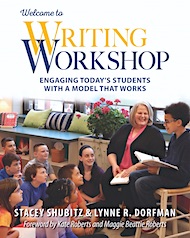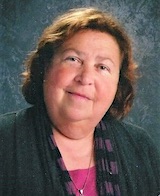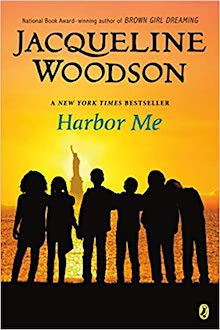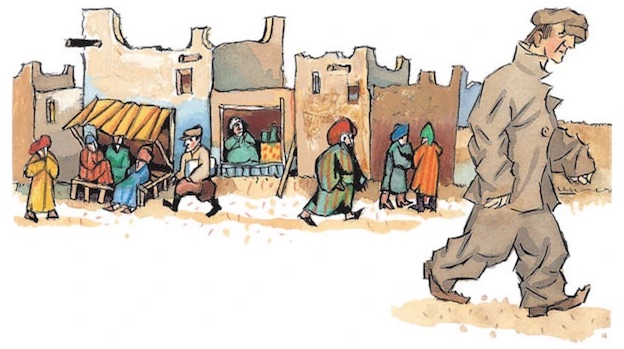Choosing Quality Books That Raise Awareness
Today, children’s literature is more dynamic than ever and offers its readers so many avenues for pleasure, reflection, adventure, and emotional engagement.
Quality tween and teen literature today is also often timely and relevant. There’s a large movement among educators to include books that are “socially conscious” – books that can serve as windows, mirrors, and sliding glass doors, as Dr. Rudine Sims Bishop so eloquently put it more than 30 years ago.
…. Literature transforms human experience and reflects it back to us, and in that reflection we can see our own lives and experiences as part of a larger human experience. Reading, then, becomes a means of self-affirmation, and readers often seek their mirrors in books (Bishop, Rudine Sims. “Mirrors, Windows, Sliding Glass Doors.” Perspectives: Choosing and Using Books for the Classroom. Vol. 6 No. 3 Summer 1990).
In Reading Reasons, Kelly Gallagher explains why reading is so important to our elementary and secondary students: “Great writing matters, and by examining great works, teachers and students are provided rich opportunities to wrestle with universal ethical and moral dilemmas – the same dilemmas faced by humans centuries ago, and the same dilemmas our great-grandchildren will face.” (Page 148)
Biographies Have a Special Power
There are wonderful biographies written as picture books to help students get interested in that nonfiction genre. (Of course we all know by now that picture books are a popular and much-read addition to middle grades libraries!)
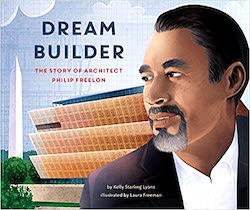
Choosing biographies about women, people of color, and individuals with special challenges as read alouds or books to highlight (in talks and multimedia reviews you can post on your website or Canvas page) is a great way to give students a cadre of human beings they can look up to and emulate, helping them to set goals for themselves and dream big!
An Inspiring Biography Example
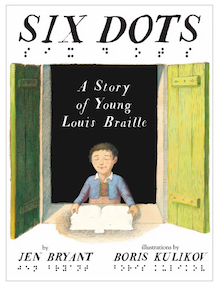
Adolescents learn that they don’t have to wait until they graduate from high school or college to compose music, publish their stories outside of school, obtain a patent for an app, raise monies for a charity, or start a small business. Six Dots is great book to inspire students to set goals and take action! (Download a discussion guide prepared by Rose Cappelli and me.)
A Safe Harbor for Class Discussion
In 2018’s Harbor Me by Jacqueline Woodson, a diverse group of children get to spend a weekly hour of kids-only sharing time, which the book’s narrator, Haley, captures on a voice recorder. This book touches on racism, bullying, immigration, friendship, and forgiveness. Here are some related questions that might spark a rich discussion in your classroom:
What are some issues preteens and teens are struggling with either in school or at home?
- How can we address issues preteens and teens are dealing with in our current society?
- Why is it important to preserve memories?
- What is an ecosystem? Why are they important? How is the ARTT room like an ecosystem?
- Discuss the definition of harbor. What do you think it means to harbor someone?
- What are the ways that you or a family member or friend are harbored?
- What examples can you find in your community where you see organizations or groups harboring?
Woodson has many books for students in grades 4 through 9 including Locomotion, The Other Side, Brown Girl Dreaming, and Each Kindness. An author study built around Woodson would be a great way for middle schoolers to explore their personal and social identities and raise social awareness.
Students could choose from a text set and discuss it in a book club while the teacher does some kidwatching. At the end of the author study, students can select a way to share their discoveries and personal connections to the text they read using video, Animoto, a panel presentation, or an infographic.
Historical Fiction: The Green Book and The Gold Cadillac
As Covid restrictions are lifted, many families are considering a vacation. If they are traveling by car, they probably aren’t thinking about where they can stop to eat – there will be many places to choose from – and there will be many choices for booking a hotel or motel.
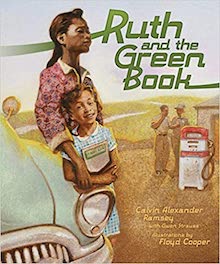
Ruth’s story is fiction, but The Green Book and its role in helping a generation of African American travelers avoid some of the indignities of Jim Crow are historical fact (and the subject of a 2018 Oscar-nominated film).
Pairing this book with The Gold Cadillac by Mildred Taylor can lead to a compare/contrast of events and characters within these two stories. This picture book is about an African American family that heads down south in the gold Cadillac to visit relatives in Mississippi. In the rural South, the two young sisters discover for the first time what it’s like to feel scared because of the color of their skin. (A policeman pulls them over and accuses the father of stealing the car.)
Students can easily relate this story to news stories they have watched on television. Taylor’s story is designed to reach multiple audiences: black as well as white, children as well as adolescents and adults.
These two picture books are appropriate for upper elementary and middle school. A vocabulary study around words such as caravan, lynch, eyeballed, unison, and ignorance are just some of the choices for students to explore using a Concept of Definition Map or creating their own entries in their vocabulary or reading response journals.
The Refugee Experience: A Text Set
How I Learned Geography by Uri Shulevitz is the award-winning artist’s most personal work to date. In this autobiographical account, Shulevitz recounts a traumatic event from his childhood, when his refugee family fled to Turkestan. The book is largely based on his childhood memories of World War II and features stunning illustrations that celebrate the power of imagination.
An author’s note includes a brief description of his family’s experience, two reproductions of his early drawings, and the only surviving photograph of himself from that time. Consider creating a text set with Refugee by Alan Gratz, The Night Diary by Veera Hiranandani, We Had To Be Brave: Escaping the Nazis on the Kindertransport by Deborah Hopkinson, and Other Words for Home by Jasmine Warga,
Diversity and Social Awareness All Year
While we want the books in our libraries to represent the cultures of the children in our classroom, we also want to give children opportunities to learn about people who are not like them, opening a world of new possibilities and understandings.
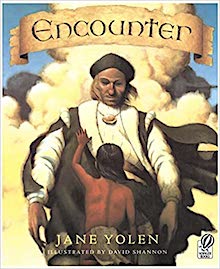
If books are less than truthful or narrow and out-of-date, let’s weed and replace them with books that can do a better job of representing our students, the contemporary world, and the real facts.
With an increasingly diverse school-age population, making school relevant to students is critical. Books can provide a sense of belonging for all young people. Books have the power to develop awareness, empathy, and compassion for others. They allow students to have discussions about cultures and experiences that are like or different from their own. They can even inspire our students to write their own stories!
Diverse Stories by Diverse Authors
While authors can write about a cultural experience that is not their own, authors who
write about their own cultural experiences come from a place of authority. They are most likely to be a trusted source because their writing comes from a lived-through experience.
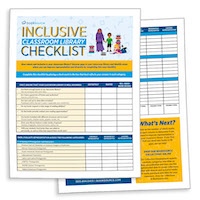
Need help? Go to Booksource to watch a video and download a free, printable “Inclusive Classroom Library Checklist.” In order to raise social awareness and foster self-esteem in our classrooms, we need to give students easy access to quality literature that represents accurate portrayal of cultures and allows students to see themselves in the pages of books they read.
